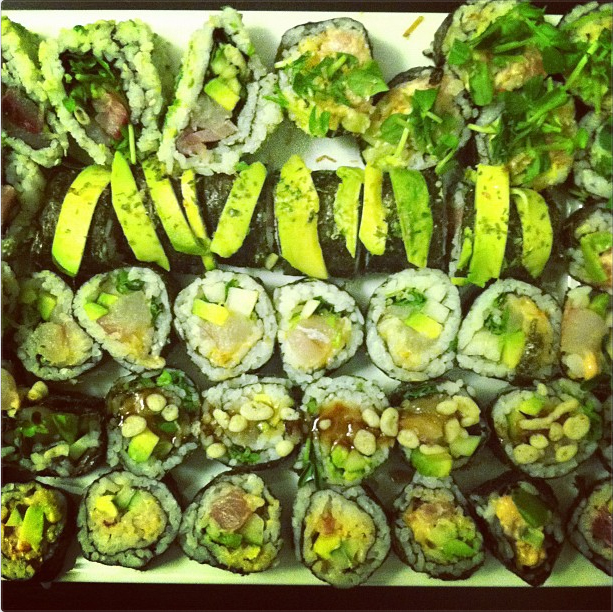 Sometimes I long for the days when we didn’t know so much about where our food came from. It just seems life would be easier if I didn’t walk around, constantly questioning whether pesticides were used in growing the lettuce in my salad or wondering how the animals slaughtered to make my shawarma sandwich were treated. Of course my concern for the environment and for my own health make that sort of blissful ignorance impossible. I’m a dedicated organic produce-buying, free-range meat-consuming, food scrap-composting kind of gal. But still. I’d love to go back to the days when dozens of my favorite foods weren’t on the no-no list.
Sometimes I long for the days when we didn’t know so much about where our food came from. It just seems life would be easier if I didn’t walk around, constantly questioning whether pesticides were used in growing the lettuce in my salad or wondering how the animals slaughtered to make my shawarma sandwich were treated. Of course my concern for the environment and for my own health make that sort of blissful ignorance impossible. I’m a dedicated organic produce-buying, free-range meat-consuming, food scrap-composting kind of gal. But still. I’d love to go back to the days when dozens of my favorite foods weren’t on the no-no list.
As an enlightened eater, going out for sushi–once a weekly indulgence–has become a guilt-inducing task I try to avoid. Gone are the days of blindly consuming shrimp tempura and eel avocado rolls. Spicy tuna? Forget it. (Imported shrimp, fresh water farmed eel and blue fin tuna are on the “avoid” list of Seafood Watch’s sushi guide).
But giving up sushi isn’t something I’m willing to do. And as I learned at a panel on seafood earlier this year, the best thing we can do to support sustainable fisheries is to eat local seafood. After all, it’s often not a particular species that is the problem, but rather the way commercial fishers trawl the ocean with giant boats and nets, inadvertently damaging ecosystems in their paths. And when seafood is shipped off to places like China for processing, only to then be shipped back to the US to sell, the problem is even worse. But fish caught by small nets on small boats and sold within a reasonable distance can go from sea to table with little carbon footprint.
Armed with this knowledge, I headed to our local Greenmarket in search of sustainable alternatives to the seafood we were used to seeing in our sushi.
I came home with three kinds of fish: porgy, skate and albacore tuna, all super fresh from my favorite fishmonger, Blue Moon Fish. As I readied the rice and dug out the sheets of nori, our party of three set about slicing up matchsticks of Asian pear (also from the Greenmarket), cucumber and avocado. We whipped up some spicy mayonnaise sauce and poured dishes of crunchy toppings (tempura flakes and ground up wasabi pea snacks). We washed some local pea shoots to add some green and got out the bottle of eel sauce (it’s good on so much more than eel). Twenty minutes and one sake cocktail later, we had dinner. Traditional sushi it wasn’t. But beautiful, fresh, crunchy, sweet, and smelling of the sea, it went down easy–without an ounce of guilt.



